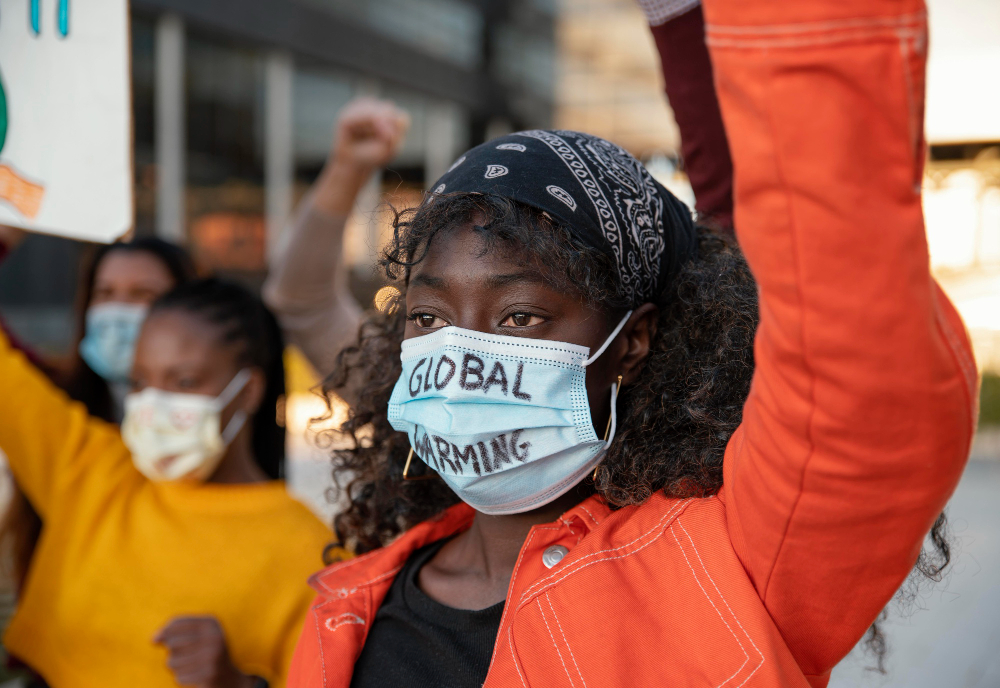Breathless burden: Unmasking women's heightened vulnerability to air pollution
Published on 25 Jun, 2025

The pervasive peril: Air Pollution's broad attack on lung health
Air pollution, a silent and insidious environmental threat, poses a significant challenge to global public health, particularly in low- and middle-income countries where exposure levels are often dangerously high.1 This complex cocktail of particulate matter, noxious gases, and other contaminants infiltrates the air we breathe, launching a multifaceted assault on the human body, with the respiratory system bearing the initial and often most severe brunt. When inhaled, pollutants can irritate the airways, trigger inflammation, and lead to a range of respiratory ailments, from coughing and wheezing to more severe conditions like asthma, Chronic Obstructive Pulmonary Disease (COPD), pneumonia, and even lung cancer.1 The health effects are not uniform, and a growing body of evidence reveals that women often experience a disproportionate share of this burden.
Biological blueprint: Inherent factors increasing women's susceptibility
Several physiological and biological factors intrinsic to women can render them more vulnerable to the harmful effects of air pollutants.
Anatomical and physiological differences
Women generally have smaller lung capacities and airway dimensions compared to men, even after accounting for differences in body size.3 This can mean that for a given concentration of pollutants, women may experience a relatively higher dose to their lung tissue. Additionally, some research suggests that women may metabolize certain toxins differently than men, potentially influencing their susceptibility.3 Hormonal fluctuations throughout a woman's life also play a role; changes in estrogen and progesterone levels can affect airway inflammation and responsiveness, potentially increasing vulnerability to pollutants at certain times.2
The vulnerability of pregnancy
Pregnancy represents a period of profound physiological change and heightened susceptibility for women. Air pollutants can cross the placental barrier, directly impacting fetal development and leading to adverse birth outcomes such as low birth weight, premature birth, and an increased risk of developmental issues.2 For the mother, exposure to air pollution during pregnancy is linked to an increased risk of complications like preeclampsia, gestational diabetes, and worsening of pre-existing respiratory conditions.2 Studies in sub-Saharan Africa have shown that impaired maternal lung function, often exacerbated by indoor air pollution, is associated with adverse pregnancy outcomes, including preterm birth and small-for-gestational-age babies.6
Societal and lifestyle factors: The compounding exposures
Beyond biology, societal norms, traditional roles, and socioeconomic conditions significantly amplify women's exposure and vulnerability to air pollution.
The burden of indoor Air Pollution
In many parts of the world, particularly in low- and middle-income countries across Africa and Asia, women bear the primary responsibility for household cooking.7 This often involves using polluting solid fuels like wood, dung, charcoal, or kerosene on open fires or inefficient stoves, leading to extremely high levels of indoor air pollution (IAP).7 Women, along with young children who are often by their mothers' sides, spend many hours each day in these smoke-filled environments, inhaling a dangerous mix of particulate matter and toxic gases.7 This chronic exposure is a major contributor to respiratory infections (like pneumonia, a leading killer of children in Nigeria 8), COPD, asthma, and other lung diseases.1
Socioeconomic disadvantage
Socioeconomic status is a critical determinant of environmental exposure and health outcomes. Women, particularly in developing countries, often face greater socioeconomic disadvantages, which can translate to living in areas with higher ambient pollution levels, residing in poorer quality housing with inadequate ventilation, and having limited access to cleaner energy sources and healthcare.5 These factors collectively increase their exposure to pollutants and reduce their capacity to mitigate the health impacts. For instance, women in low-SES communities may live closer to industrial zones or high-traffic areas, further compounding their exposure from indoor sources.9
Charting a course for equitable respiratory health
Addressing the disproportionate impact of air pollution on women requires a multi-pronged approach that tackles both exposure and vulnerability.
Key interventions include:
- Transitioning to cleaner household energy: Promoting and facilitating access to cleaner cooking fuels (like LPG, biogas, or electricity) and improved cookstoves is paramount to reducing IAP, especially in regions like sub-Saharan Africa.1
- Improving housing and ventilation: Ensuring adequate ventilation in homes can significantly reduce the concentration of indoor pollutants.6
- Strengthening health systems: Healthcare services must be equipped to recognize, diagnose, and manage pollution-related respiratory illnesses, with a particular focus on maternal and child health.1 Regular monitoring of respiratory health, especially for pregnant women exposed to IAP, is crucial.6
- Empowering women and raising awareness: Educating women about the health risks of air pollution and providing them with resources and agency to adopt protective measures is essential.3
- Policy and regulation: Governments need to implement and enforce stricter air quality standards for both ambient and household air, alongside policies that address the socioeconomic factors increasing women's vulnerability.1
Conclusion
The air that sustains life should not be a source of illness and inequality. Women's heightened vulnerability to air pollution, stemming from a complex interplay of biological, societal, and economic factors, demands urgent and targeted attention. From the intimate spaces of homes reliant on polluting cooking fuels in Africa 7 to the broader environment, the respiratory health of women is disproportionately compromised. By recognizing these specific vulnerabilities and implementing gender-responsive strategies, we can work towards a future where clean air is a reality for all, allowing every woman and child to breathe freely and live healthier lives.
References
1. Onyeaghala, C. A., & Obidinma-Igwe, P. (2025). Air pollution and lung health: A significant public health challenge in resource poor countries. The Nigerian Health Journal, 25(1). https://tnhjph.com/index.php/tnhj/article/view/918
2. Future Generali. (2024, April 12). The silent killer: Exploring air pollution effects on women's health. https://general.futuregenerali.in/blog/health-insurance/dont-let-air-pollution-steal-your-breath-health-effects-you-need-to-know
3. Freshcraft. (2022, November 23). Why are women more vulnerable to indoor air pollution? https://www.thefreshcraft.com/why-are-women-more-vulnerable-to-indoor-air-pollution/
4. Štillová, K., Bánovčin, P., & Buday, T. (2016). Impact of air pollution on age and gender related increase in cough reflex sensitivity of healthy children in Slovakia. Frontiers in Physiology, 7, 54. https://doi.org/10.3389/fphys.2016.00054
5. Nilsson, I. M., Olstrup, H., Rittner, R., Tinnerberg, H., Accetta, G., Ehlers, S., & Broberg, K. (2019). Connecting air pollution exposure to socioeconomic status: A cross-sectional study on environmental injustice among pregnant women in Scania, Sweden. International Journal of Environmental Research and Public Health, 17(1), 156. https://doi.org/10.3390/ijerph17010156
6. Mulenga, D., Nyirenda, H. T., Chileshe-Chibangula, M., Mwila, P., & Siziya, S. (2018). Pregnancy outcomes associated with chronic indoor air pollution-related maternal respiratory ill health in Ndola and Masaiti, Zambia. Internal Medicine: Open Access, 8(1), 269. https://doi.org/10.4172/2165-8048.1000269
7. Amegah, A. K., & Zumla, A. (2024). Household air pollution and respiratory health in Africa: Persistent risk and unchanged health burdens. Journal of Clinical Investigation, 134(18), e179220. https://doi.org/10.1172/JCI179220
8. UNICEF Nigeria. (2021, November 12). Nigeria has highest number of air pollution-related child pneumonia deaths in the world. https://www.unicef.org/nigeria/press-releases/nigeria-has-highest-number-air-pollution-related-child-pneumonia-deaths-world
9. Olstrup, H., Raza, W., Sommar, J. N., & Orru, H. (2025). The impact of socioeconomic factors on long-term mortality associated with exposure to PM2.5: A systematic literature review and meta-analysis. Public Health Reviews, 46, 1607290. https://doi.org/10.3389/phrs.2025.1607290
